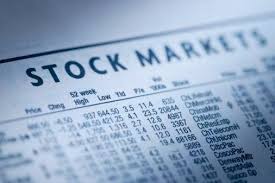A very important aspect of understanding stocks is to know how they are described. Some of the common terms that we all must have come across are market capitalisation, industries & sectors and cyclical & secular stocks. These are the important terms associated with the description of stocks:
- Market Capitalisation- We can often hear companies referred to as Large-Cap, Mid-Cap or Small-Cap. All these terms refer to the overall market capitalisation of a company. It is basically the measure of a company’s size. In other words, it can be describes as the Dollar value of a company. It is calculated by multiplying the number of shares outstanding by the current market price. There is no specific point in order to qualify a company as being a large, mid or small-cap. Let us take an example in order to understand the above. Say Apple has a stock price of $500 per share and has 900 million shares outstanding. If you were to multiply both the figures, you would find out that its market capitalisation stands at $450 billion, easily earning a spot as a large-cap company. Larger cap companies will tend to be much less vulnerable to the ups and downs in the economy, mostly due to their huge financial reserves. On the other hand, small-cap companies are very vulnerable to turmoils but can provide for a lot more growth as compared to the large-caps.
- Sectors & Industries- Companies are always divided into sectors and industries. A sector represents a large part of the economy. For instance, there can be a sector called as financial companies while another can be called as technology companies. Industries, on the other hand, are much more specific and are part of these sectors. For example, banks are an industry within the financial sector. The existence of sectors and industries are important to know as they frequently all move together in terms of stock price. An event in the economy can affect the entire industry. For example, if there are higher gas prices, profits of transportation companies will fall, thus causing the companies’ stock prices to fall down. What if an industry was in the midst of innovation and was the center of attention? Much like during the dot com bubble, which as the time when investors bought up any tech companies they could find, even though their stock price was worthless. This resulted in the crash of 2000. An important part of maintaining a healthy portfolio, which means a collection of stocks is by having stocks that belong to different sectors and industries. It is important as, if say, stock of one industry was to fall, you would have the protection of the other stocks, which would belong to different industries and sectors.
- Cyclical & Secular- Stocks can be divided into two very important categories- Seculars & cyclicals. The big difference is in the way that they make their profits. Secular stocks make up stocks that people need, regardless of the state of the economy. For example, consumer staples, healthcare etc. They are services that people will always use, even during weak economy. The opposite to these are cyclicals- sectors & companies that require a strong economy to thrive. Industries such as travel and luxury goods are some of them. During times of economic hardship, they tend to have decreased profits as people try to cut down on unnecessary expenses.
Click here for government certification in Accounting, Banking & Finance





4 Comments. Leave new
Informative!
Illustrative article.
Informative article..
nice one.